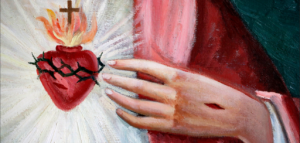
The Transfiguration of Jesus
Jesus took with him Peter and James and his brother John and led them up a high mountain, by themselves. And he was transfigured before them, and his face shone like the sun, and his clothes became dazzling white. (Matthew 17:1-2)
The disciples are, not surprisingly, overwhelmed by this mountaintop experience. Jesus has just asked them, “Who do you say that I am?” and Peter has declared, “You are the Messiah, the Son of the Living God.” Even though Peter knows who Jesus is, and the disciples know that Jesus must suffer and be killed and will be raised on the third day, they cannot know what it all means. Well, who could?
Just last Sunday, the first Sunday of Lent, we heard the account of the temptation of Jesus in the desert, which emphasized his humanity. The Transfiguration of Jesus clearly reveals his divinity – the voice of God even identifies him as “my Son, the beloved.”
The disciples had known Jesus for a few years by this point. They travelled with him, ate with him, argued with him – in person. They knew his human side well. No wonder seeing him transfigured was a bit of a shock! And no wonder Peter wants to keep Jesus up there for a while. At the Eucharist and at other peak moments – times of intense love and compassion and beauty, for example – we may “fall to the ground” and recognize God there. We may long to stay in those moments, too.
But Jesus’ journey is not a linear one, and the disciples can’t stay up on the mountaintop with him. There is work to be done – indeed, he must face betrayal and crucifixion and even descend into hell, the place of the dead, before God raises him to new life in God’s glory.
-Anne Louise Mahoney, Managing Editor

